Global trends in the clinical utilization of exosomes in dermatology: a bibliometric analysis
- PMID: 39450105
- PMCID: PMC11500466
- DOI: 10.3389/fmed.2024.1462085
Global trends in the clinical utilization of exosomes in dermatology: a bibliometric analysis
Abstract
The arena of exosomal research presents substantial emerging prospects for clinical dermatology applications. This investigation conducts a thorough analysis of the contemporary global research landscape regarding exosomes and their implications for dermatological applications over the preceding decade. Employing bibliometric methodologies, this study meticulously dissects the knowledge framework and identifies dynamic trends within this specialized field. Contemporary scholarly literature spanning the last decade was sourced from the Web of Science Core Collection (WoSCC) database. Subsequent to retrieval, both quantitative and visual analyses of the pertinent publications were performed utilizing the analytical software tools VOSviewer and Citespace. A comprehensive retrieval yielded 545 scholarly articles dated from January 1, 2014, to December 31, 2023. Leading the research forefront are institutions such as Shanghai Jiao Tong University, The Fourth Military Medical University, and Sun Yat-sen University. The most prolific contributors on a national scale are China, the United States, and South Korea. Among the authors, Zhang Bin, Zhang Wei, and Zhang Yan emerge as the most published, with Zhang Bin also achieving the distinction of being the most cited. The International Journal of Molecular Sciences leads in article publications, whereas Stem Cell Research & Therapy holds the pinnacle in citation rankings. Theranostics boasts the highest impact factor among the periodicals. Current research hotspots in this area include Adipose mesenchymal stem cell-derived exosomes(ADSC-Exos), diabetic skin wounds, cutaneous angiogenesis, and the combination of biomaterials and exosomes. This manuscript constitutes the inaugural comprehensive bibliometric analysis that delineates the prevailing research trends and advancements in the clinical application of exosomes in dermatology. These analyses illuminate the contemporary research focal points and trajectories, providing invaluable insights that will inform further exploration within this domain.
Keywords: adipose-derived mesenchymal stem cells; bibliometrics; exosome; skin wounds; visual analysis.
Copyright © 2024 Tang, Cai, He, Tian, Hao, Liu, Jing, Xu and Li.
Conflict of interest statement
The authors declare that the research was conducted in the absence of any commercial or financial relationships that could be construed as a potential conflict of interest.
Figures


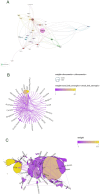
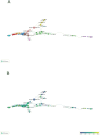

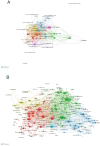

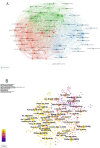

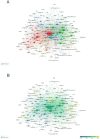


Similar articles
-
Bibliometric and visualized analysis of the applications of exosomes for bone regeneration.Front Cell Dev Biol. 2025 Mar 17;13:1552727. doi: 10.3389/fcell.2025.1552727. eCollection 2025. Front Cell Dev Biol. 2025. PMID: 40166633 Free PMC article.
-
Knowledge Mapping of Macrophages in Osteoporosis: A Bibliometric Analysis (1999-2023).Orthop Surg. 2024 Oct;16(10):2326-2343. doi: 10.1111/os.14159. Epub 2024 Jul 9. Orthop Surg. 2024. PMID: 38982570 Free PMC article. Review.
-
Global scientific trends on exosomes therapy for osteoporosis from 2004 to 2023: A bibliometric and visualized analysis.Medicine (Baltimore). 2024 Jul 12;103(28):e38835. doi: 10.1097/MD.0000000000038835. Medicine (Baltimore). 2024. PMID: 38996093 Free PMC article.
-
A Bibliometric Analysis of Exosomes Therapy in the Treatment of Osteoarthritis from 2012 to 2022.J Pain Res. 2023 Jun 26;16:2171-2188. doi: 10.2147/JPR.S407050. eCollection 2023. J Pain Res. 2023. PMID: 37397273 Free PMC article.
-
Advancements and trends in exosome research in lung cancer from a bibliometric analysis (2004-2023).Front Oncol. 2024 Apr 16;14:1358101. doi: 10.3389/fonc.2024.1358101. eCollection 2024. Front Oncol. 2024. PMID: 38690166 Free PMC article.
References
Publication types
LinkOut - more resources
Full Text Sources

